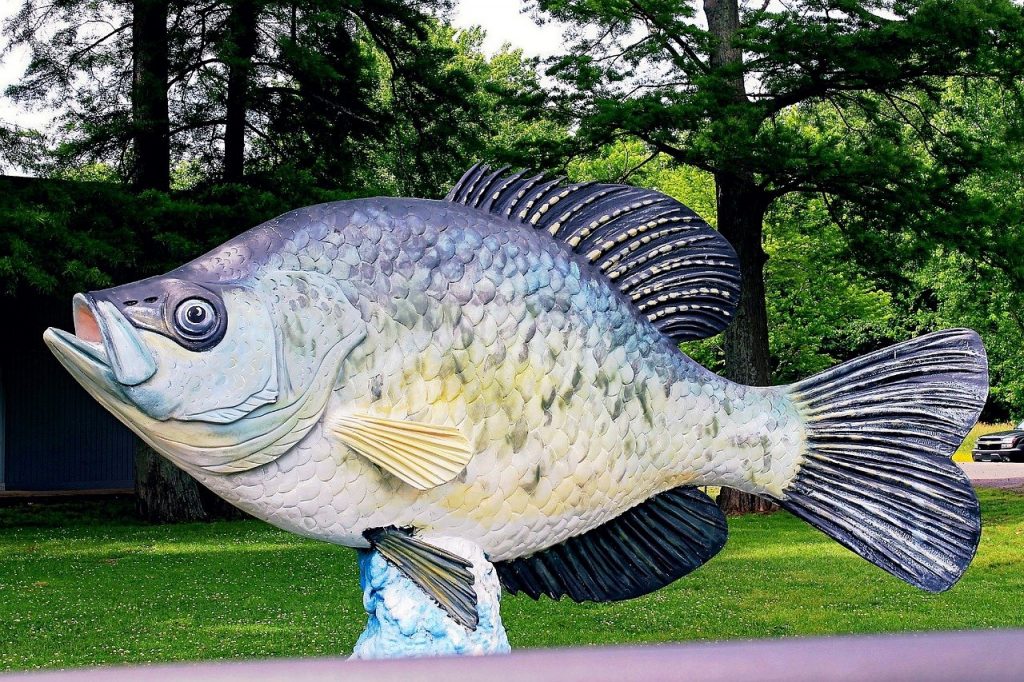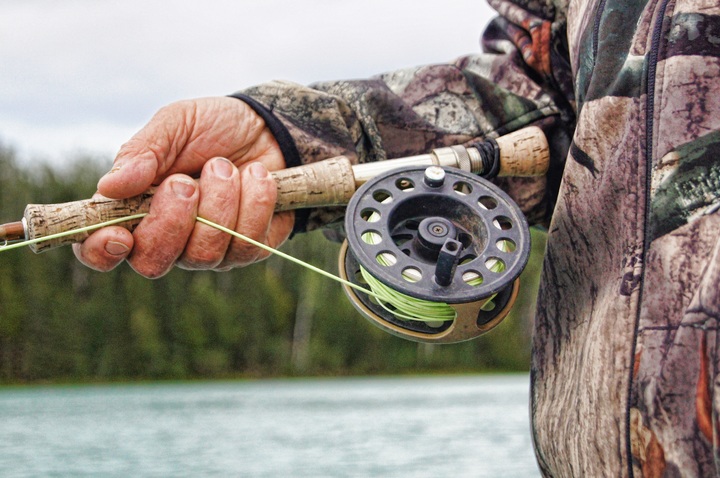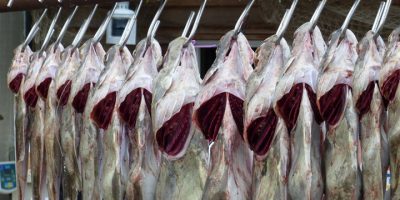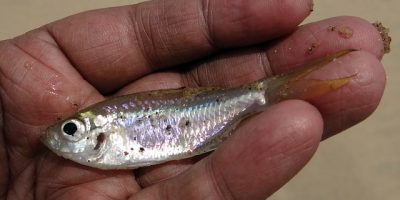If you’re in Michigan, one thing you shouldn’t miss is their crappie hotspots. Right after a long wintery ordeal, anglers prepare their rods because the start of spring is the perfect time to visit the best crappie lakes in Michigan. I’ve been to a lot of lakes across the country, and Michigan is always on my top list when it comes to crappie fishing.
During this period, crappies will gather on the shallow, tepid waters before spawning. This is the best time to cast your line and make the most out of the first kick of spring.
If you’re looking for a place for your next fishing trip in MI, the following are some of the best lakes to visit:
Best Crappie Lakes in Michigan
1. Belleville Lake

Topping my list is Belleville Lake. It has stained and turbid water where you can find lots of fallen trees. This is where crappie fishes love to feed during spring and in the early stages of fall.
This is a 1,270-acre lake with excellent shore and fishing access for anglers. There are also boat launches here in case you’re going on a kayak or dinghy.
Aside from crappie, Belleville Lake is also home to northern pike, catfish, carp, bass, and yellow perch. You can use minnows, worms, and artificial baits to hook your catch.
But before you go, I highly suggest calling the authorities to inquire about the water quality. In 2018, locals were advised to stay away from the lake due to the blue-green algae found on its waters. You can still fish and launch a vessel, but you should release the catch. This is the case if the water condition at the time of your visit is not within the safety standards.
Fees apply here, though it’s not that expensive. Also, this place is very family-friendly, and you can bring kids to watch as you fish.
2. Lake St. Clair
The crappie population in Lake St. Clair is spread out, but it remains an attractive spot for anglers. Over the years, locals have conducted efforts to improve the lake’s water quality so more fishes will thrive.
For the best catch, I suggest that you head to the east side of Anchor Bay. This is where you’ll find coves and shallow bays where schools of crappie can be seen from March to May. Some anglers even went home with 16-inch crappie from here.
Remember that Lake St. Clair is a Metropark with tons of amenities for the family. If you’re not fishing, you can take a stroll on the 1,600-feet boardwalk. Its shoreline is over a mile long, which gives anglers a lot of spots to explore.
There are also boat launches here if you’re using a kayak or fishing boat. Whether it’s angling, picnicking, golfing, swimming, or simply relaxing, Lake St. Clair won’t disappoint.
For the fees, they offer annual passes that will give you access to all 13 Metroparks in the Huron-Clinton area. Take note that the fees for the boat and vehicle are charged separately.
3. Whitmore Lake

About 15 miles southeast of Howell is the quiet Whitmore Lake. It’s the perfect respite for fishing-loving families who want a break from their busy schedules. Aside from the large crappie, this place is known for its ‘Famous Wet Burrito’ that you can enjoy at the Whitmore Lake Tavern.
This lake contains a sizeable population of crappie fishes. It’s a 677-acre lake adjacent to Ann Arbor, so it’s very easy to reach.
Take note that the lake isn’t always open. Most of the time, they open during spring to allow anglers to hook crappies. With this, you should arrange your trip first by calling the lake authorities.
During my trip here, I made sure to wear polarized glasses. This is a trick you can use to spot suspended crappie around the weed beds at a depth of up to 15 feet. It’s not easy to spot with the naked eye because of the sun’s glare. You should also check the indentations on the shoreline where crappie fishes can hide.
Aside from fishing, Whitmore Lake also has a 250-acre golf course where you can play some rounds.
4. Randall Lake
Many anglers flock to Randall Lake to experience its abundant crappie population. It’s a 513-acre lake with three separate basins where hundreds of crappies reside. Your catch can be as big as 12 inches, which isn’t really that bad.
Aside from that, Randall Lake has extensive weed growth, and the water is fairly clean. This is not surprising because it feeds from the Coldwater River.
For the best catch, I suggest that you try the run-and-gun technique. This method involves covering a lot of water area and waiting until you spot a school of fishes.
If that’s not your style, you can use tube and jigs because the crappies at Randall Lake are crazy for it. You should also check out the lake’s north side because it’s where big crappie activity happens.
Aside from crappie, you can also catch pike, bass, and other panfish in Randall Lake. It has public access, surrounded by restaurants, hotels, shopping centers, and other amenities. Overall, it’s a family-friendly place, not to mention that they also host annual events.
5. Otter Lake

If you’re heading to Western Upper Michigan, crappie lakes are quite a rarity. Still, you have Otter Lake to visit. This place is open to the public without any fees, as far as my last visit is concerned.
Otter Lake is home to big crappies, with some growing as large as 14 inches. There are also a lot of 10-inch catches, which is really not that shabby.
Overall, this lake is 890 acres, which feeds in and out of the Otter River. This is a lowhead dam that serves as an impoundment, so there are no wonder fishes congregate here in spring.
You can visit Otter Lake at any time of the day and any day of the week. This lake is also teeming with bullhead, trout, bass, walleye, and yellow perch besides crappie. They also have local bait shops where you can get your supplies.
You can also launch a boat on the lake’s west side, but ensure that you secure necessary permits first.
6. Union Lake
Crappie fishing in winter? It’s possible if you’re in Union Lake. It’s known for its large walleyes, bluegills, and bass, but many anglers often miss the black crappie population. With the right lure and bait, you can bring home 14-inch crappie from your visit here.
This is a 465-acre lake with a maximum depth of 110 feet. So far, this is one of the deepest lakes I’ve fished in, but there are also shallow parts where crappies spawn and feed. Also, both the east and south sides of Union Lake offer excellent catches.
I suggest checking with the locals if there are closed portions of the lake. You’ll also need a fishing license, and fees may apply, depending on what part of the lake you’re going to fish in.
7. King Lake

Gracing the Baraga County is the 508-acre King Lake. This is pretty shallow for just 15 to 22 feet, which makes it a perfect place for crappies to thrive.
Basically, you’ll catch crappie here with the same size you’ll get from Otter Lake. The key is locating schools of crappies on the scattered weed beds. You should also look for submerged wood because crappies love it, and you’ll surely find a couple of them at any time.
If you want to expand your fishing experience, you can launch a boat on the north side of the lake. There’s a cluster of small islands in the area where you can also hook crappie. If you don’t have a vessel, the lake’s south and west banks are promising for inland fishing.
Aside from crappie, King Lake is also known for its northern pike, walleye, bass, yellow perch, and sunfish. It’s a very prolific lake, which is the reason why the shores get packed with anglers during the peak season.
8. Hamlin Lake
Throughout the year, Hamlin Lake offers outstanding catches. It has a large population of perch, mouth bass, and bluegills. But during spring, anglers go here to hook the biggest crappie they can possibly get.
The lake is open all year round, 24 hours a day, and requires a small fee for recreational access. You can also launch a boat here by the shore or the integrated pier.
This natural lake feeds from the Hamlin Dam, which offers more fishing possibilities for all anglers. This is a 5,000-acre lake, which is insanely large for any recreational angler.
Aside from summer and spring fishing, Hamlin Lake is also a favorite during winter. It’s one of the top ice fishing spots in Michigan where the fishes don’t just seem to run out.
Tips for crappie fishing
To make your crappie fishing more rewarding, here are some of my secret tips you can use:
- There’s a perfect spot for every season. During spring, crappies go to the shallows to spawn. During this period, you can catch them on weed beds, stumps, and surrounding vegetation. In summer, crappies move deeper due to the increasing water temperature. With that, night fishing might yield better results.
- Cast properly. When targeting shallow waters, cast away from the brush. Your bait should land past the brush so that it will sink and create a tight line.
- Soft baits at the docks. For the docks, I use soft baits ad ultralight rods. You wouldn’t want to disturb the water too much and drive away your potential catch.
- Cast into deep cover. Crappies love the deep cover, but not all anglers know how to deal with it. In this case, you need to focus more on reach than casting. Move close slowly and avoid scaring the fish. If you’re on a boat, turn off your trolling motor.
Frequently Asked Questions
Q: What is the limit for crappie in Michigan?
A: The limit depends on the lake where you’re planning to fish. In general, the limit in most Michigan lakes is 25 crappie per day. However, there are some lakes that cap it at 10 fishes a day. It’s important to check the lake rules before you start fishing to avoid any problems.
Q: Where do crappies live?
A: Crappie fishes can be found in freshwater sources like ponds, lakes, streams, and pools. These fishes prefer to stay near fallen and soaked trees as well as boulders and vegetation. You can also find some of them feeding or spawning on sandy or muddy areas along the lake.
Q: Can I use corn as bait to fish in Michigan?
A: Using bait mixes, including corn, is legal in Michigan. However, there are local ordinances that may limit the use of such baits. Again, you should inquire to the lake authorities to ensure that you’re not violating any rules. Aside from the bait type, they will also require a specific hook type to prevent damaging other species.
Q: What is the best month to catch crappie?
A: The time to catch crappie is during the months that fall within spring and fall. During these periods, crappie fishes go to shallow waters after going deep during winter and summer. This gives you a better chance of hooking a large catch.
Q: What are the best lures for crappie fishing?
A: To hook large crappie, you should use grubs, spinners, or jigs. These are very effective lures, and anglers swear by them whenever they are trying to hook crappie. Just make sure that such lures are allowed on the lake where you’re planning to fish.
Final words
The best crappie lakes in Michigan will give you a fishing experience like no other. These lakes are teeming with various fish species, especially the most sought-after crappie. Just make sure that you have the right rod, lure, and bait to go home with a large catch.


